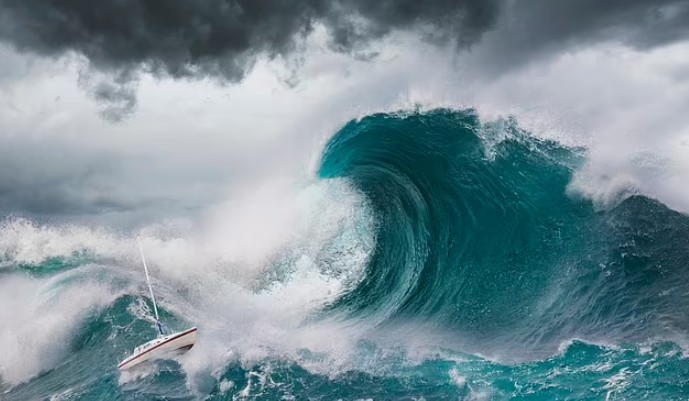Imagine a wall of water up to a third of a mile high, roaring across the ocean at hundreds of miles per hour. The sheer destructive force of a mega-tsunami is almost beyond comprehension.
Unlike regular tsunamis caused by earthquakes, mega-tsunamis are often triggered by huge landslides or collapsing volcanoes.
Three regions in the US — Alaska, Hawaii, and the West Coast — face the threat of mega-tsunamis due to their proximity to unstable volcanoes, landslide-prone areas, and earthquake zones.
One dramatic example occurred millions of years ago when an asteroid impact triggered a mile-high mega-tsunami during the time of the dinosaurs, leaving traces scientists still study.
Today, one chilling possibility involves the Cumbre Vieja volcano on the Canary Island of La Palma, which could collapse into the Atlantic and send a mega-tsunami toward the US East Coast.
The Netflix series ‘La Palma’ brings this scenario to life, showing a family on vacation as researchers discover signs of a volcanic eruption that could unleash a catastrophic wave.
This idea comes from a 2001 study by Dr Simon Day and Steven Ward, who warned that a collapse of Cumbre Vieja’s west flank could drop up to 120 cubic miles of rock into the sea, creating a massive wave.
Their research suggests this wave could start at 2,000 feet high near the volcano and still reach up to 150 feet when it hits the Americas, threatening coastal cities.













+ Немає коментарів
Додайте свій